In honour of our fifty-eighth Independence anniversary, I visited Woodford Square, aka The People’s University, where seeds of Trinidad and Tobago’s Independence grew. But instead of feeling pride, I felt shame.
Twenty tree stumps, envoys of once stately trees, left to rot without love or dignity illuminated Marcus Garvey’s words: a people without knowledge of their past… is like a tree without roots’.

(Copyright Serina Hearn)
Public spaces symbolise how we feel about ourselves. A tree cemetery does not bode wellbeing; instead it signifies a deep malaise. Aberrations of neglect in our capital are evident in our famous Queen’s Park Savannah and other public parks, where mutilated remains of trees proliferate.
Illegal deforestation continues in our protected forests, without abatement, or consequences, and our immaturity as a country can be judged by our un-sustaining agricultural practices. No nation can feel proud of such lack of foresight and indifference, can it?
The Royal Botanic Gardens marked its 200th year anniversary in 2018. Minister of Agriculture Clarence Rambharat, speaking at the bicentennial anniversary on 6 December, said we were living in a society where many people lacked foresight and were ‘not even planning for the next two years, let alone 200’.
Despite his leadership position to create necessary change—as both the Savannah and reforesting falls under his ministry—Rambharat, instead, expresses frustration.
Local Corporation leadership demonstrates environmental incoherence by the prolific daily production of methane gas, a 26 times more potent green-house gas than carbon dioxide. Community-based Environmental Protection and Enhancement Programme (CEPEP) workers fill garbage bags with grass cuttings and leaves; decomposition when deprived of oxygen triggers an anaerobic condition that makes highly flammable methane gas.

Landfills all over our country are filled daily with these methane bombs. In January 2020, Guanapo landfill burst into flames; and for a week neighbouring populations were severely affected. No cause was given but MP Anthony Garcia, said: “…the surface fire was extinguished… however, due the accumulation of gasses, there is an underground fire which would be brought under control soon.”
The event, but not the real cost to people’s lives is reported. Gary Aboud, an environmental activist, claims toxicity from the dump is leaching into the water-table.
Previously, in 2014, 2015, 2016, 2019 the Beetham Landfill, erupted into fire. Port-of-Spain population was smothered in toxic smoke for days. The health hazards of landfills poisoning neighbourhoods in close proximity can be lethal.
Why were we not composting the tons of organic material CPEP produces?
Mr Sammy, a POS City Corporation administrator, explained to me—after I unexpectedly stumbled into their Mucurapo Road garbage truck compound, while investigating wild petunias on the roadside—that an extensive report had been done several years ago.

(Compyright Office of the Parliament 2020)
He said composting had been highly recommended, along with the purchase of wood-chipping machines to shred tree trunks and branches to become mulch instead of landfill. When I asked what happened to the recommendations, he half smiled and said that the report had been sent upstairs. The decision was above his pay grade.
I understood his wry smile as it was evident that policy remained the same. Instead of making gardeners out of CEPEP, their mandate is to produce potent green house gas.
In 2018, a comprehensive report was commissioned by the Minister of Planning regarding landfills, and intentions to transform environmental practices were announced. Organic household waste was accounted for as 27.15% but there is no mention of CEPEP’s contribution and no updates regarding abating landfill toxicity.
This tiny republic has produced many academic scholars. It is the birthplace of a significant acoustical instrument: the steel pan. It has produced Olympic winners, Nobel Laureates, a Carnival to rival Brazil’s. We can Google any subject, therefore, environmental ignorance cannot be a defence.
I wondered, in the spirit of the victimised, could we blame colonial attitudes, passed down to us? Can we claim that we are suffering from the Stockholm syndrome?

(Courtesy Serina Hearn)
Can we argue in our defence that we have internalised the plundering, greedy, mentality of our colonisers, thereby, rejecting principles of environmental respect practiced by the First Peoples?
Colonial government was established around Woodford Square, formerly known as Brunswick Square, formerly known as Place des Ames or ‘The Place of Souls’. Downtown Port of Sport, and its surroundings were known as Cumucurapo (Conquerabia, Camocorabo, Cumcurape and Cumacarapo) by its First People: Place of Silk Cotton Trees.
It is here in 1787, when Don Chacon (the last Spanish Governor) diverted the St Ann’s River to become the East dry river, that we can timestamp the beginning of environmental degradation. Centuries before, the Ariapita river, renamed St Ann’s, ran through the square where the Tanio peoples lived on its banks, surrounded by Silk Cotton forests (Ceiba) they revered as Trees of Life.
During the Red House restoration in 2013, a burial place was found of 60 Tainos inclusive of 13 children. Radiocarbon dating revealed that they lived there between 125 – 1395 AD over a thousand years before the first Spanish conquest in 1498. They were good stewards of the home they called ‘Cairi’ (or Kairi) which meant Island.
Their dwindling survivors could only look on in horror when rampant deforestation began in earnest with the arrival of the French in the late 1700s. They came with their seasoned slaves and free black/coloured people and capitalism boomed. Plantations of sugar, coffee, cotton, along with an influx of captives from Africa, made Trinidad ripe for the taking by the marauding British in 1797.

The conviction was eventually overturned as Picton argued that Trinidad was subject to Spanish law, which permitted the use of torture at the time.
Lieutenant-General Sir Thomas Picton, described by the Duke of Wellington as a ‘rough foul-mouthed devil, but very capable’, became the first British military governor. He inflicted harsh punishment on enslaved people. Those who died under his watch were considered fortunate compared to whom he tortured and displayed in The Place of Souls.
His horrific torture of a 14-year-old bi-racial girl, Louisa Calderon, who refused to confess to a crime, stunned the population. Picton’s modus operandi was: let them hate, so long as they fear.
Picton’s mission was to mentally cripple, and destabilise both indigenous and African people. He ordered the destruction of their gateway-to-heaven, and Silk Cotton forests fell to the axe—leaving behind a legacy of dissonance that further disenfranchised the original significance of the Ceiba.
The one remaining survivor in Port of Spain, located in the Savannah near Belmont Circular Road—the last of the original forest—was cut down in 1997 under suspicious circumstances. It was never replanted by the Horticultural Division.
Port of Spain, now, remains bereft of its botanic namesake. We have a national bird, a flower, but not a national tree. This is rich irony: We are migratory like the Ibis, pretty like the Chaconia, but are we grounded like Ceiba, the Silk Cotton tree.

Or did Picton and Sir Ralph Woodford succeed in paralysing our connection to earth, and heaven, when they destroyed the forests that blanketed Cumucurapo?
Picton was recalled to face trial on abuse of power and to appease British opinion, moving toward abolition of slavery. Once the new colony was stable, a civilian governor, Woodford, was appointed in 1812. We can thank him for his vision to rebuild POS out of stone, instead of wood—as it had burned down in 1808—but his racist legacy doomed much of its architectural heritage to decay and arson.
In 1917, Brunswick Square was renamed Woodford, as a way to distance T&T’s German stakeholders. It was a re-branding aimed at promoting British values after World War I.
In the process, it suggested approval of Woodford: a governor who opposed the abolition of slavery and created a system of institutionalised racism aimed at strangling freedom of the upwardly mobile non-whites.
Famous for their ‘divide and conquer’ techniques, we can trace present tribal rivalry to the premeditated introduction of Asians into the mix—instigated by Woodford’s superior, Earl Henry Bathurst—to further divide and augment a British bio-political system. What had been an open market of equality among all shades of people became crushed under his divisive laws.
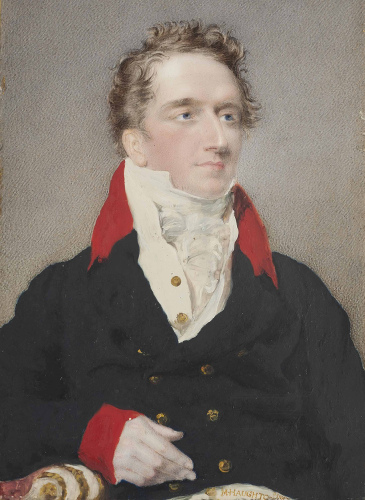
Woodford is ‘credited’ with institutionalising class and racial divisions in Trinidad and Tobago and was against emancipation.
To legitimise land domination, civilisation was transposed on virgin neotropical forests by eradicating them. Alien species, deemed better than trees like the Silk Cotton were imported and planted in Le Place de Ames—newly re-named Brunswick Square—to erase memories of war crimes.
Woodford brought pitch from the Pitch Lake to suppress native plants we now denigrate as bush. His brainchild, the Royal Botanic Gardens, replaced an ancient rainforest which occupied 61.8 acres. It was planted with 90% foreign trees to showcase the botanic trophies of tropical Britain that boasted ‘the sun never sets on the British Empire’.
In the eyes of the Old World, the romance of the exotic New World was enviable. The Queen’s Park Savannah—another Woodford re-brand—with its abundance of ornamental trees was described as more beautiful than the parks of London or Paris.
Charles Kingsley wrote about Trinidad in ‘At Last: A Christmas in the West Indies’, published 1887: ‘The island had never been surveyed: and no wonder… it is a mystery… how it has ever got done…. Considering the density of the forests, one may as easily take a general sketch of a room from underneath the carpet as of Trinidad from the ground’.

(Copyright Destination TNT)
In The Road to Botany Bay, Paul Carter wrote: ‘… space itself was a text that had to be written before it could be interpreted’ (1987, 41). His spatial history reconstructed the ways in which European explorers and settlers translated the landscape into an object that could be comprehended, colonized, and consumed (RB Craib 2000, 10).
The surveyor’s science was essential to augment conquest. Carter concluded: ‘the country did not precede the traveller: it was the offspring of his intention’ (1987, 349).
In order to price, sell, buy, steal, will, exchange, or tax, one had to first be able to comprehend the land. Erasing forests and bush was legitimised for the purpose of surveying, and branding—so Crown Lands could be controlled, monitored and optimised.
The British were no different to the Spanish whose motto was: ‘By the Compass and by the Sword, more and more and more’. The word sword was replaced with axe. They did not care if deforestation decimated unique ecosystems; they were civilising the savages and beautifying public landscapes while raping the land.
Today, we clamour to take down the statues of Columbus here, or Picton in the UK, to demonstrate a global awakening. But if we treat land like they did, aren’t we implicit too?

Archbishop Desmond Tutu speaking at Truth and Reconciliation Commissions, said: “[…] Here the central concern is not retribution or punishment but, in the spirit of ubuntu, the healing of breaches, the redressing of imbalances, the restoration of broken relationships. This kind of justice seeks to rehabilitate both the victim and the perpetrator.”
In the spirit of rehabilitation of the victim, what Independence Square needs are symbols of restorative justice. Replanting Ceibas along the promenade, and Woodford Square, in remembrance of Cumucurapo, would be a start.
Late former Prime Minister Dr Eric Williams said in his Independence speech: “You are the the future; we are at best the present—at worst the past.”
But what worst is he referring to? Does he, like the colonisers, only see the history of this land beginning in 1498?
Are we like ‘the settler’ who ‘makes history; his life is an epoch, an Odyssey’. He is the absolute beginning: ‘This land was created by us’; he is the unceasing cause: ‘If we leave, all is lost, and the country will go back to the Middle Ages’ (Fanon 1963, 51).
Thus imperial history assigns meaning retrospectively and from without, rejecting context, locality, and specificity… preexisting places and alternative conceptions of space that preceded the colonialist enterprise vanish from view. (RB Craib 2000, 10)

If we embody colonial contempt for our environment and are oblivious to how we continue to abuse; we come to the post-colonial question: Which system do we choose now—that of the former stewards of the land, the First Peoples? Or, plunderers of the land, the greedy capitalists that slashed and burned?
In History of the People of Trinidad and Tobago, Williams wrote: ‘[…] the Amerindian civilisation… was essentially agriculture, representing an important advancement over the paleolithic period of human history. They cultivated the soil by constructing round heaps or mounds of earth, firstly to loosen the soil, secondly to protect the roots against the dry season, and thirdly for composting with shoveled ashes’.
Ironically, the PNM, like the Pied Piper, led the nation away from agriculture: ‘Before the great oil came…. It was all agriculture.… We ate locally. Now…US$600 million worth of food is imported!’
We are not grounded in pre-colonial environmental-awareness to connect us to the land and appear to associate the growing of food with Massa day. We cannot expect anyone to love a place in which they are taught to take and not give back; entitlement is a precursor to moral failure.
The colonialists acted as if ‘the country did not precede the traveller: it was the offspring of his intention’ (Carter 1987, 349). Perhaps, it can be argued that our society also acts like the traveller, as if independence took place in an environmental vacuum and was given to a people who cannot remember and therefore dis-member.

(Courtesy Serina Hearn)
If Minister of Rural Development and Local Government Senator Kazim Hosein would educate CEPEP to mound with grass clippings around our trees, shrubs, instead of making methane bombs, then we would be following the First Peoples’ coherent example of composting with the dry season in mind.
We don’t need a university degree to know that returning organic material to the ground is one of humanity’s oldest traditions; this is evident in how we bury our dead: Ashes to ashes, dust to dust…
I was born out of this global cross pollination of humanity, my DNA is represented by 32 distinct geographical locations. This country is the only place where I feel as if I am finally home, having lived many years abroad.
It is with its nature that I feel at peace. The way the rain smells, the sound of parrots flying home in the evening, the memories of my maternal grand-mothers who Woodford would have put to sit at the back of Trinity Cathedral, Brunswick Square, so they would know their place, segregated and humiliated.
But it is my grandmother’s spirit, and her mother, my great-gran, born 1903 and 1880, who anchor me when I am here. Love connects me to my birth place and the bones of First Peoples buried here, along with some of my great grandparents.
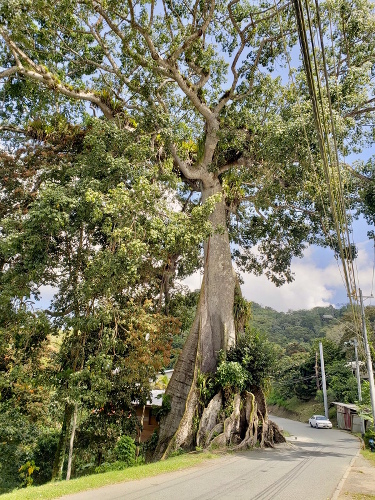
(Courtesy Serina Hearn)
I mourn, with the dead, the destruction evident in the absence of once abundant butterflies, whose caterpillars starve because we destroy their host plants, aka bush. Dwindling birdlife, wildlife, amphibians and fish, approach their extinction threshold, not just here but globally.
In 1801, Alexander Von Humboldt, considered by some to be the world’s first environmentalist, coinciding with the British arrival in Trinidad, speculated during his exploration of Venezuela, that we might travel to distant planets and take our ‘lethal mixture of vice, arrogance and ignorance with us’—after he witnessed the devastating effects of deforestation by the Spanish.
He argued that the planetary natural systems were an interwoven living whole, and by pulling at its innate threads we had begun to unravel its integrity. Deforestation of indigenous forests is a silent holocaust.
We, the inhabitants, don’t need permission to begin reforesting with native trees, such as the Ceiba, Sandbox, Tonka Bean, Guanacaste, Brazil Nut, Balata, Autograph tree—if governmental bodies will not.
My grannies saved every green scrap for the compost heap. They knew that one part urine to 10 parts water made fantastic plant fertiliser. They could grow anything and made the most delicious ice-cream from Barbadine growing in the small backyard, on the chain link fence around the fowl yard.

(Copyright Serina A Hearn)
When we were sick, Granny knew where to get shining bush, vervain, zebapique, caster-oil, senna pods, aloe, neem; and how to prevent infection with spider-web. The etymology of the word religion (religare) is interpreted by Lactantius (4th century) as: to fasten or bind; while Augustine, preferred: re-eligere ‘to choose again’.
My grannies were not academic people but they bound us to the earth. They ebbed and flowed with eco-principles that encouraged us to choose again, to commit and bind to the life-source.
Our islands are still home to extraordinary beauty and diversity of the non civilized kind. We cannot bring back the dead but we owe a debt of gratitude. Nature is holding on, it can still regenerate itself; if we choose to grow beyond the past and present capitalistic greed and callousness, and be the change we want to create.
The public is welcome to participate in statutory meetings held by Local Government on the last Wednesday of every month, but they are held early in the day, when the average working person cannot attend.
Perhaps, we can begin our civic duty by demanding that they make meeting times accessible to the working public, so we can attend these meetings and demand change.
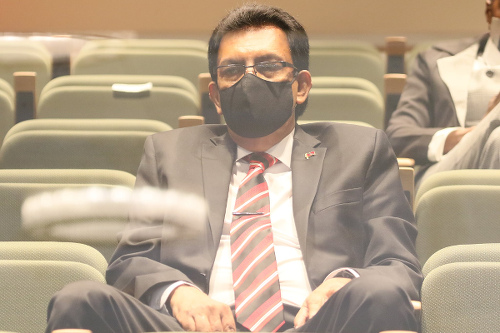
(Copyright Office of the Parliament 2020)
In The Human Planet, Lewis and Maslin argue Anthropcean began when the colonists imposed their civilising destruction on global ecosystems, like a meteorite falling out of the sky and destroying the dinosaurs; they ravaged the planet.
‘We have become a new force of nature, dictating what lives and what goes extinct. Although… our power, unlike plate tectonics or volcanic eruptions, is relative—it can be used, modified or even withdrawn’.
It is time to reevaluate our colonial concept of beautification and, in the spirit of ubuntu, focus on the healing of breaches, the redressing of imbalances. And to put less emphasis on the pretty Chaconia and more on Ceiba: Gateway to heaven—a stalwart champion of biodiversity that connects earth and sky.
Serina A Hearn is a Bishop Anstey alum who attended St Martin’s School of Art, London, UK. Two collections of her poems were published by Mid America Press Inc and Woodley Memorial Press. She is currently working on a third book.
 Wired868 Wired868 for smart sport news and opinion
Wired868 Wired868 for smart sport news and opinion
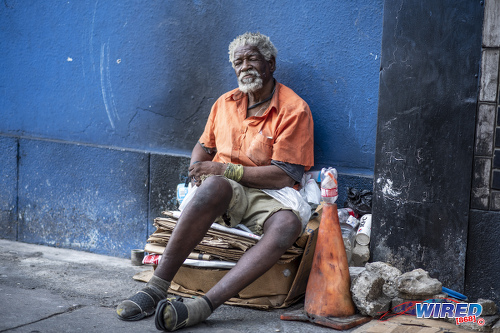
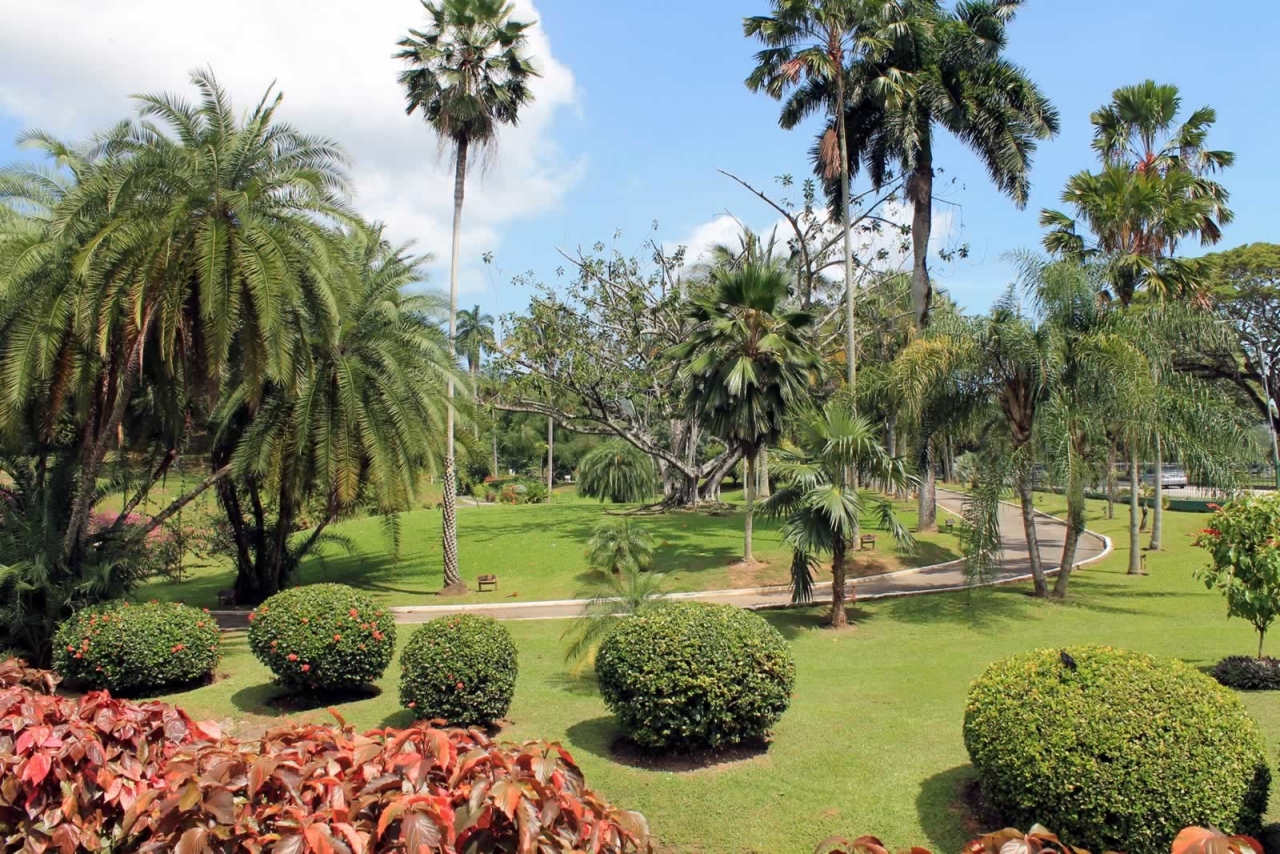





I imagine a few people will get bent out of shape over the use of the word ‘holocaust’ in this context. Presumably they will ask ‘what would various Jewish groups have to say’ and make other remarks to that effect.
Live long and prosper
I read this article in its entirety and learned so many things from it about our twin island republic. I was especially moved by u encouraging d wider community to start planting the trees of old that was once indigenous to our islands. The composting part was also interesting. I am fortunate to own a 3/4 acre parcel where I live and started planting fruits that we don’t see anymore. Mammy sepote, sugar apple, custard apple, Chinese tamarind, sour cherries, red cherries, long, Starch, box and spice, Doduce and Julie mangoes and some more. I am involved in this carbon zero group which is trying to bring down our carbon footprint in this island. Please forward any information in d future.
It is a pity that a well-researched article that attempts to highlight current bad policies or practices in Trinidad (re terrible destruction of inherited ornamental trees with no replacement, stupid waste management, no composting, etc.) got a bit carried away with colonial history. In spite of all the bad things the Brits did in the Caribbean and elsewhere, they were pretty good at conservation and managing genetic resources, preservation of watersheds, among other things. (I have had the benefit of visiting former Spanish, French and Portuguese colonies to compare). In addition, I would argue that their development and management of arboretums and/or botanical gardens gave the global public (and Trinidadians) a rich, diversity of tree resources, various flowering plants, herbs, spices, etc. And it is a terrible tragedy to watch the mismanagement, devaluation and destruction of those inherited resources (patrimoine as the French call it) in Trinidad over the past 50 years. The Botanical gardens which once contained a very impressive selection of BOTH exotic and local tree species is being turned into a big lawn. I was appalled to learn some years ago (when jogging in the Gardens) on a visit to TT that nobody collects or stores the seeds from any of the trees that were planted in the Gardens a long time ago. The garden crew told me that they “only follow instructions”. So, eventually, all the exotic species will be lost. I doubt that Ms. Hearn will rejoice at that. The same problem exists across the Caribbean but TT inherited the greatest botanical assets from the colonial period.
If we look broader at the British practice of developing botanical gardens, arboretums and public parks across the Commonwealth, there are many positive (not negative) things. I was pleasantly surprised to find a line of beautiful Samaan trees in Zanzibar some years ago. Samaan is a Brazilian tree. Similarly, Pretoria is famous for its majestic Jacaranda trees (another exotic). Many of the ornamental trees that people love in cities all over the Commonwealth countries are exotics that were introduced by British landscapers/town planners. Harare still has a few streets with magnificent red and yellow Flamboyant trees. So too does Guyana but in very limited numbers today – the result of ignorance or neglect or both. Same fate of the first botanical gardens in the western hemisphere in St Vincent. Nobody is replacing or replanting trees in public parks in the Caribbean. Is that a good thing? (I recall seeing marigolds in a tree stump in the POS Botanical Gardens, rather than a young sapling).
More recently, there is a silly sort of myopic “localism” or nationalism in which some people only want to see indigenous species in parks and public spaces. The logic of that eludes me because genetic diversity is a good thing (unless taken to extremes in which exotics crowd out indigenous species). So, in Brussels where I live now, city authorities decided to replace all exotic (non-local species) in parks and public spaces with local trees when they die or are damaged by weather. But the most magnificent tree in the park and certainly the one that will live the longest is a Giant Sequoia (from California) at its entrance!!! I have visited arboretums in Europe and elsewhere and it is a tremendous pleasure to be able to see, feel, touch and smell exotic species from foreign places. The same applies to Trinidad. Trinidadians should know better than to destroy or abandon their inherited botanical resources, whether exotic or indigenous.
Very enlightening. I now understand why the gardens are the way they are… and a lot of other things. If Woodford was so bad, (and it sounds like he was) why have we not campaigned for his name to be removed from our streets and squares all over T&T just like Milner had his name removed from the hall at UWI?
Also, we, as citizens, need to follow up on that ridiculous and dangerous decision (or perhaps it was a non-decision) regarding greenhouse gases and cepep – this needs to stop. Surely we can make that change. I always wondered why they were putting greenery in garbage bags…and hoped they meant to take them somewhere for composting.
As for the danger of the landfill, it’s a constant reminder to everyone there is no “away” especially those who love to buy, buy, buy and then throw things “away” when they have no more use for them. Consider instead less buying and more focus on sharing and building community as embraced by Buy Nothing Project groups around the world – there is one right here in T&T but it’s hyperlocal so you may have to start your own for your community. Take a 7 day challenge to buy nothing. Challenge yourself to not use a plastic bag offered by Massy and other retailers. Challenge Massy to take their “sustainable” action one step further and refuse to purchase plastic that will not degrade in any of our lifetimes. We, the consumers, have a voice and we need to use it, instead of being blind sheep, led astray. Time to wake up!
Thank you Serina A Hearn
Thanks, Serina.
There are so many quotes/references to research done by Historians/books in your article. Could you Cite your sources.
“Twenty tree stumps, envoys of once stately trees, left to rot without love or dignity”
It was only last year I started some data collection on the trees in Woodford Square and the Botanical Gardens. How distressing! Does the author know which trees were cut down and why?
Can we for a change get articles that is not the cliched ‘ Blame the white man for our current shortcomings’ theme?
Shall I recommend something from Enid Blyton for you? This isn’t the fiction section you know…
Good one Lasana!
The gun you think has been put to your head has no bullets, indeed, is merely imaginary.
Feel free not to read anything you may not like.
The fact that Serina Hearn, would reference Andre Bagoo the UNC warrior, while twisting Dr. Williams’ quotes to suit her political slant, is telling and typical. Trinidad’s open secret, is that the local white and white-ish population, never supported the end of MASSA,and the advent of africans in positions of power…even calling Dr. Williams ‘monkey eric’ in the white owned newspaper. This pro-white colonial stance, naturally opposed the PNM and naturally foung likeminded comradery with always supported INDIAN political parties (behind the scenes). Why no critique of Queen Kamla and the UNC’s reign serina? Please!Although this fallacy is promoted and postured, european trinidadians are not inherently ‘neutral’ politically with respect to african-indian issues! In fact, Indians were intentionally brought to trinidad & guyana as an ‘ethnic buffer’ between europeans and africans, and to undermine africans ‘ social, economic and political advancement. William Hardin Burnley, trinidad ‘s largest, most educated enslaver of africans, is documented as lobbying for indian labourers on the basis of what he knew was their religious anti-african racism, which would prevent cohesion among the non-european residents.
I learnt so much from reading this. I’m once again struck by how much of our history is inaccessible to the average citizen. Thank you for penning this article. I will look out for your poems.
I thought it was a very enlightening piece. Thanks Serina.
Of course…I’m certain that you did!
Beautifully woven piece.
I wondered, in the spirit of the victimised, could we blame colonial attitudes, passed down to us?“
Why not? I mean I know there is a tendency among some to use colonialism as a crutch for their victimhood mentality. However, colonial economic interest and priorities were imposed on us when the signing took place in 1962,so how could one reasonably expect the mindset that drives it not to have been a factor still?
The mere fact that the former minister said that most people “lacked foresight and were ‘not even planning for the next two years, let alone 200’” should have cued her in. What is the economic system that forces a people to be constantly preoccupied with making a money, as Sprangalang would say; not the same economic system that only concerns itself with making and extending profits? The same economic system that only sees value in something based on its monetary value? Whether a person is wearing a suit (a complete absurdity in this humid climate) or buss up clothes, our economic culture is one of hustling
I do very much agree with the writer, almost completely in fact. Hell, this was a *damn* good article. But she has more than answered her questions. The harsh truth is that most of us in this society *have* in fact, as she put it, “internalised the plundering, greedy, mentality of our colonisers, thereby, rejecting principles of environmental respect practiced by the First Peoples (and African and Indian peoples). What the hell else could one expect? As she beautifully put it, the Euro “were civilising the savages and beautifying public landscapes while raping the land.” In Eurocentric culture, nature was traditionally considered innately hostile.
So preservation of green spaces was never the predominant ethic in this society (it was not even the predominant ethic in Industrial England, environmental laws were not just granted by the elites); none of these cultures treatment of nature was ever given any serious (read State) consideration. Dat eh was swelling the bank accounts of their financiers.
So the industrial asceticism that is this country’s societal DNA *has* to be confronted. Great article